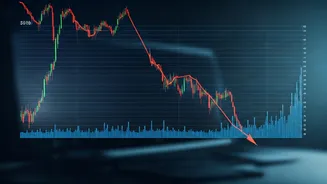Market Outlook: Current State
The Nifty's performance is currently under close observation, with analysts and investors alike attempting to predict its future direction. The rally,
its strength, and potential points of resistance are being thoroughly assessed. Several economic and market factors are influencing this assessment. Understanding this current market state is crucial for interpreting the prospects of the Nifty index. The present conditions involve a complex interplay of domestic and global developments. Various sectors are displaying varying levels of momentum, further complicating the overall picture. These elements will determine whether the rally pauses or continues its upward march towards new highs. Factors such as corporate earnings, global market sentiments, and government policies play a significant role. Investors must recognize the current state before making any predictions for the near future.
Analyzing Resistance Levels
A significant question is where the Nifty's rally could encounter obstacles. One key level being watched is around 26,000, which might act as a point of resistance, potentially causing the rally to stall. Analyzing these resistance levels involves evaluating historical performance, technical indicators, and psychological factors among traders. If the index struggles to overcome this level, a period of consolidation or even a correction may follow. However, if the Nifty breaks through, it could signal further gains and the establishment of new record highs. Investors will be keeping a close eye on the performance and any significant changes. Such assessment requires considering the dynamics of support and resistance and how the current conditions have evolved over time. The reaction of the Nifty at 26,000 will provide crucial information. This will help inform predictions regarding its trajectory in the short to medium term.
Factors Driving the Market
Several components are influencing the Nifty's trajectory. These include corporate earnings reports, which are providing insights into the financial health of listed companies and sectors. Economic data releases, such as inflation figures and GDP growth rates, shape market sentiment. Global market trends, influenced by international events and investor confidence, also play a crucial role. Government policies and regulations, which can impact specific sectors or the overall market environment, also need to be considered. The collective effect of these elements shapes the Nifty's movements, either supporting the rally or creating a headwind. Investors assess these factors to predict where the Nifty will head. The interplay of these forces creates both opportunities and challenges for investors. Monitoring these developments closely is essential for making informed investment decisions and navigating the market with a clear understanding.
Investor Sentiment Analysis
Investor sentiment is critical in driving the Nifty’s direction. This sentiment refers to the general attitude of investors towards the market, which can be optimistic (bullish) or pessimistic (bearish). Positive sentiment, driven by encouraging economic data, strong corporate performance, or favorable policies, tends to support a rally. Conversely, negative sentiment, due to concerns about economic slowdowns, geopolitical instability, or disappointing earnings, can lead to market corrections. The sentiment among different investor categories such as retail investors, institutional investors, and foreign institutional investors (FIIs), is vital. Monitoring this is essential. This helps to gauge the overall market mood and its likely impact on the Nifty's performance. Various market indicators, such as the volatility index (VIX), can also provide insights into investor fear and greed, helping to forecast the Nifty's future path. Understanding investor sentiment is essential.
Forecasting Future Trends
Forecasting the Nifty’s future involves analyzing multiple factors. This includes technical analysis that uses charts and patterns to predict potential price movements. Fundamental analysis, which focuses on evaluating the underlying economic and financial health of the companies and the market as a whole, is also important. Considering market sentiment is also crucial. Investors also look to historical data and compare current conditions to past periods to predict the future. Various economic indicators, such as inflation rates, interest rates, and GDP growth forecasts, are critical in shaping expectations. External factors such as geopolitical events and global economic trends should not be ignored. A well-rounded forecast blends technical and fundamental analysis, while incorporating insights into market sentiment and external influences. This approach helps create a more thorough and reliable outlook for the Nifty's trajectory.
Navigating Market Volatility
Market volatility is a natural aspect of trading, and it can significantly impact the Nifty's performance. During periods of volatility, prices experience frequent and substantial fluctuations, leading to increased risk for investors. Managing volatility involves various strategies such as diversification, where investments are spread across different asset classes. Investors also use hedging strategies to reduce potential losses, using derivatives like options. Regularly reviewing portfolios and adjusting them based on changing market conditions is vital. Staying informed about market news and economic developments and understanding their potential impact on volatility is vital for effective navigation. A disciplined approach to investing, with predefined risk management rules, can help investors mitigate the effects of volatility. Being prepared for volatility requires foresight and a proactive approach, protecting investments and improving the capacity to handle periods of uncertainty.











